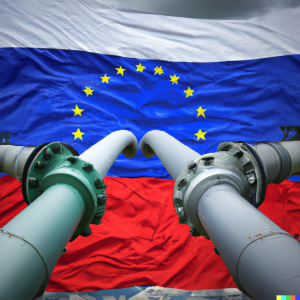-
Nord Stream explosions result in huge methane release as blame game bubbles along
Date posted:
-
-
-
Post Author
Patrick LaveryCombustion Industry News Editor
-

If the energy relationship between Russia and Europe has seen changes since 24 February of this year that were unimaginable before Russia launched its invasion of Ukraine, one of the most inconceivable events to date occurred in the past fortnight. As has been widely reported, explosions on both the Nord Stream pipelines have resulted in two ruptures in each of them and releases of methane that the Environmental Programme’s International Methane Emissions Observatory (IMEO) has said are likely to be the largest ever from infrastructure. The governments of Denmark and Sweden both observed at least two explosions, measuring 2.3 and 2.1 on the Richter scale, with two of the leaks being in Danish waters and two in Swedish waters. The enormous leaks were disrupting shipping and even aviation in the vicinity. Though both Nord Stream pipes were inactive, both were full of methane.
With the current/previous record for a one-off methane leak being around 40,000 tonnes over 17 days from offshore oil and gas fields in Mexican waters of the Gulf of Mexico, there is indeed a strong chance that the Nord Stream leaks may prove larger. An early estimate, by Kristoffer Böttzauw, director of the Danish Energy Agency, was that the total could amount to 14 million tonnes of CO2-equivalent emissions, about a third of annual Danish greenhouse gas emissions. (If the methane to carbon-dioxide equivalency factor is 25, then this would be 560,000 tonnes of methane.) Analysis of data by Canada-based GHGSat estimated that one of the four ruptures was leaking 22,920 kg of methane per hour at its peak, though the plume of methane observed by the IMEO’s satellites had reduced considerably after a number of days. (If all four ruptures were leaking at the same rate, constantly, for 7 days, this would be equal to ~15,500 tonnes of methane, showing the large difference in estimates.)
It seems certain that the explosions were deliberate, with Russia and the US both describing it as an act of sabotage, and the fact that multiple explosions occurred at once, at a depth of water at which sophisticated (i.e. military) explosives are necessary, and moreover, occurred a day before the Baltic Pipe, supplying gas from Norway to Poland, was inaugurated, lend strong weight to this idea. (The Baltic Pipe also runs fairly close to the location of the explosions.) Which party is responsible for the explosions, however, is more uncertain, even though International Energy Agency chief Fatih Birol said, without naming names, that it was “very obvious” who was responsible. Russian leader Vladimir Putin said that “sanctions were not enough for the Anglo-Saxons: they moved on to sabotage,” and the Russian government has suggested that the US would benefit most from the explosions, given its long opposition to both pipelines, and its own desire to supply the EU with natural gas. Going against this theory is the fact that flow in both pipelines had already been stopped, that the US had already secured long-term supply contracts with the EU, and that the EU has been making supply contracts with a range of other nations, including some in the Middle East and Africa, as well as Canada. Some credence was given to the idea, however, when US Secretary of State Antony Blinken responded to a question about the danger of shipping energy across the ocean in the context of the explosions, at a press conference with Canadian Foreign Minister Mélany Joly. Mr Blinken said that the situation is “a tremendous opportunity to once and for all remove the dependence on Russian energy and thus to take away from Vladimir Putin the weaponization of energy as a means of advancing his imperial designs.” In the context, it was not an unreasonable statement, though it raised many eyebrows.
US Energy Secretary Jennifer Granholm, for her part, said that it seems that Russia is to blame. This is also a fraught theory, however, as flow to Europe through the pipelines had already stopped, and it has removed – at least until the pipelines are ever repaired – a carrot that Russia could have offered the EU to thaw relations, in the resumption of natural gas supplies (which would also provided Russia with income). An alternative theory is that Russia carried out the attacks as a warning to western countries of its ability to disrupt vital infrastructure, should it want to further escalate the conflict. Doing so on its own infrastructure – unlikely to ever be used again anyway – would be a relatively ‘safe’ way of doing so. Yet another theory has been that Vladimir Putin ordered the attack to discourage a potential move against himself, by denying any possible successor to him a way of holding an olive branch to the West in promising to restart energy supplies. With so many theories circulating, a clear answer may take some time to surface, if it ever does.
The explosions have prompted European countries to increase security around oil and gas and other critical infrastructure.
